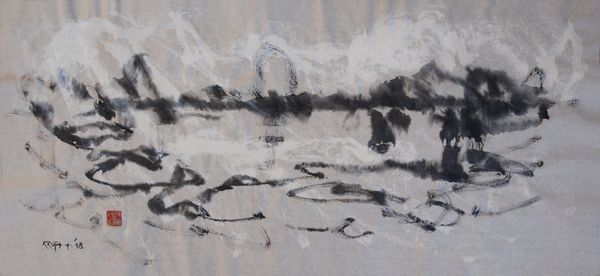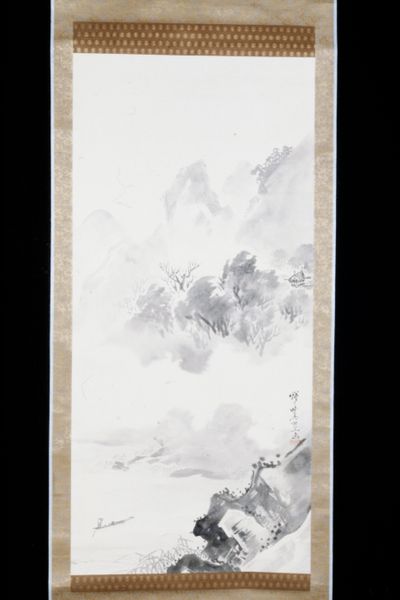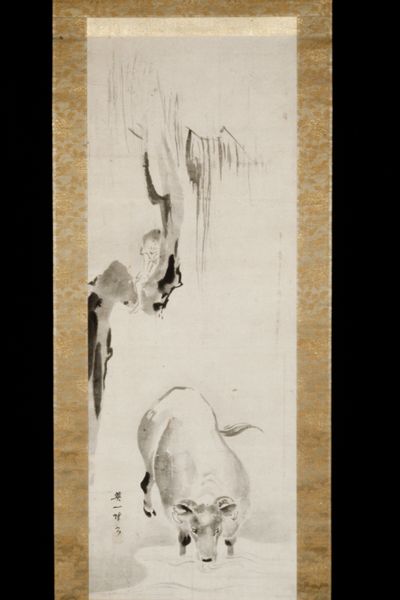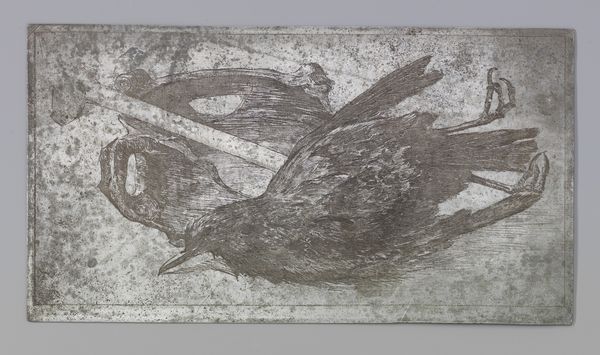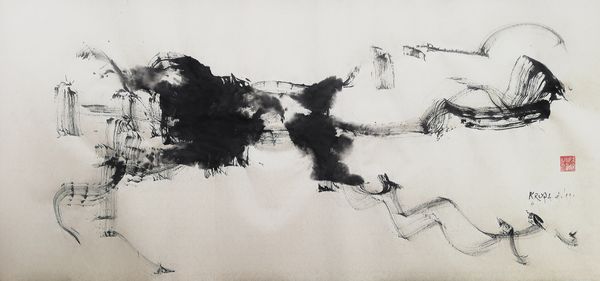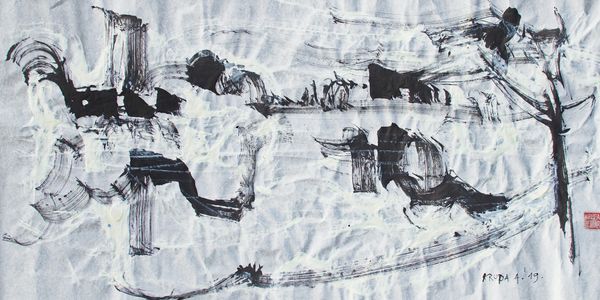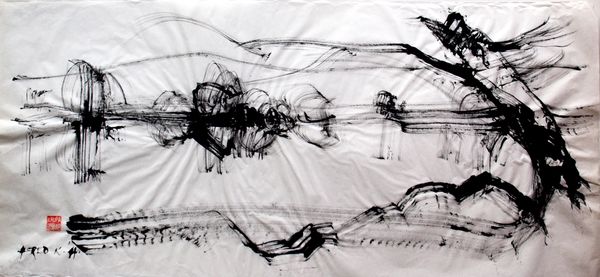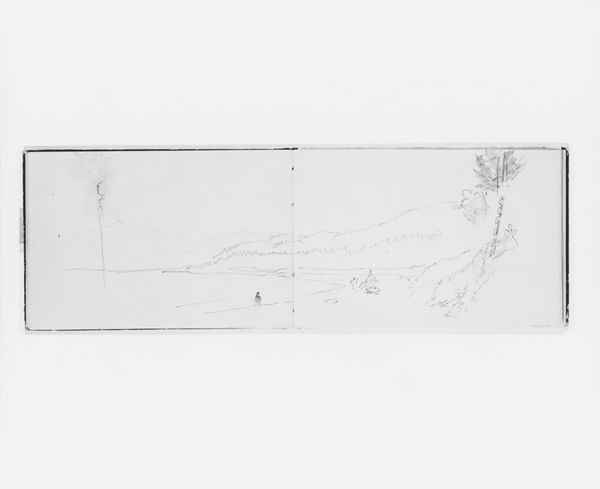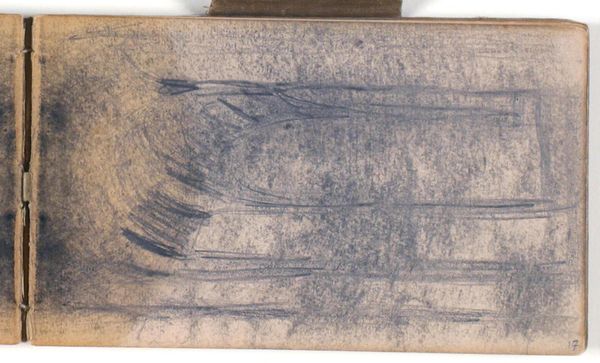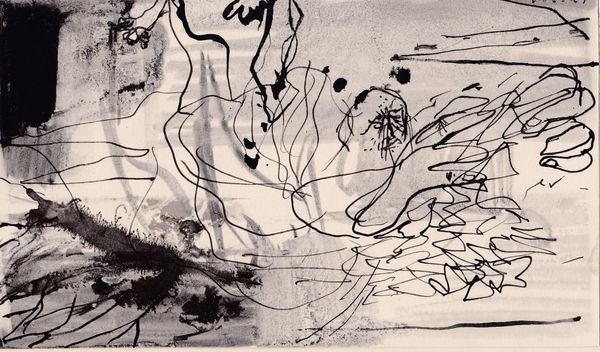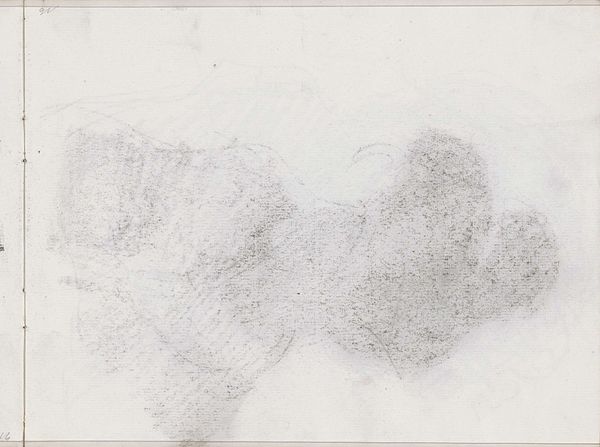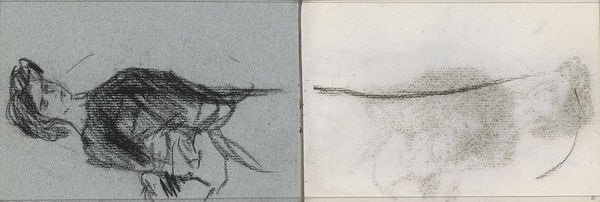
Dimensions: 38 3/8 x 13 3/8 in. (97.47 x 33.97 cm) (painting)
Copyright: Public Domain
This is Shibata Zeshin’s ink-on-paper painting, "Waterfall," from the late Edo period. The composition divides the pictorial plane into three horizontal registers: the upper waterfall, the middle ground of mist, and the lower rock formation. Note how Zeshin uses the stark contrast between the black ink and the negative space to convey the scene’s dynamism. The density of the ink suggests the weight and force of the water, while the gradations capture the atmospheric effects of mist and spray. Consider how the artist’s brushwork contributes to the overall sense of movement. Short, staccato strokes create texture on the rocks, contrasting with the long, flowing lines of the waterfall. This interplay between static and dynamic elements not only describes a natural scene but also explores the philosophical concept of impermanence. The painting is not merely a representation of a waterfall but a meditation on nature's constant state of flux. This reflection invites us to consider the transient nature of existence itself.
Comments
minneapolisinstituteofart almost 2 years ago
⋮
According to Japan's indigenous belief system, natural phenomena such as ancient trees, unusually large rocks, mountains, and waterfalls were evidence of divinity and worthy of worship. Thus, artists have long painted images of waterfalls as religious icons. In addition, paintings of waterfalls became popular decorations within domestic interiors because of their ability to suggest cool, rushing water, during the intense heat of summer.
Join the conversation
Join millions of artists and users on Artera today and experience the ultimate creative platform.
